Curious what our Sacred Landscapes conference workshops, keynotes, and other activities are about? We’ve included the entire conference schedule below with descriptions of each session! Please note that times are subject to change.
Please also view the schedule and session descriptions for the Sunrise Summit Online Conference, which takes place Oct 13-14, 2023, and is included with Sacred Landscapes registration! Sunrise Summit may also be purchased separately.
******************
WEDNESDAY, NOV 8, 2023 [For ROOTS Pass Holders]
12:30 PM – 2:00 PM – Check-in for Roots Pass Holders
2:00 – 4:00 PM – My Relationship to Pressure: Exploring a key principle to better understand the Natural Lifemanship process – with Bettina Shultz-Jobe, Tim Jobe, Kate Naylor, and Tanner Jobe
We all have a reaction to the word “pressure” – many of us have a complicated, sometimes even negative relationship with the word. So why does The Natural Lifemanship Institute insist on using it?
Whether you are brand new to the NL approach, or a seasoned veteran, this presentation serves as an important exploratory introduction to the principles of Natural Lifemanship for those just getting to know NL, as well as a deepening into the concept of pressure, for those already familiar.
Join Founders Tim Jobe and Bettina Shultz-Jobe, as well as trainers Tanner Jobe and Kate Naylor as we guide you in an exploration of your own personal relationship with pressure through interactive exercises – and how that relationship impacts your world both in and out of the round pen.
5:00 – 7:00 PM – Property Blessing for Roots Pass Holders and Speakers – with Bettina Shultz-Jobe, Tim Jobe, and Tanner Jobe
The brand new Natural Lifemanship Headquarters is the landscape that inspired our first in-person conference in years. Our dream is that this land, already sacred, will support the NL community in growing even more connected.
Please join us as we walk the new property and invite several community members to bless the land in their own cultural traditions. Your participation is valued, as this sacred landscape is meant for each and every one of you.
7:00 – 8:30 PM – NL Family Dinner and Live Music for Roots Pass Holders and Speakers
Roots Pass Holders and Invited guests will enjoy a family-style meal with the Natural Lifemanship Staff and Volunteers for the Sacred Landscapes Conference.
Live Music provided by the Darling Daughters!
THURSDAY, NOV 9, 2023
7:30 – 8:30 AM – Check-In for Community Pass Holders
8:30 – 8:50 AM – Welcome Opening Community Circle
Gather in the arena pasture, surrounded by tall trees and the open sky, as Bettina and Mary officially open the conference through rhythm, music, and movement – setting the tone for the rest of the weekend.
9:00 – 10:30 AM – Healing Relationships with Space and Place: Engaging with the environment to foster transformation – Keynote presentation with Kate Naylor
Our interdependence with the natural world around us is evident. Remembering this, from our head to our toes, is deeply healing. When we consciously explore both space and place in our work, we remind our clients, and ourselves, of the connection being offered in everything we do.
11:00 AM – 12:30 PM [Choose one of the following 6 workshops]
Exploring a Relationship to Self, Country, and Other – with Jane Faulkner
How can we strengthen our capacity for cultivating healthy relationships with ourselves, the land we call home, and fellow beings? Our minds constantly seek stability and connection in a rapidly evolving world, yet it is our bodies that possess innate abilities for true connection and healing.
In this experiential workshop, we will immerse ourselves in the world of somatic practices to explore diverse avenues for forging connections with our inner selves, the natural environment that surrounds us, and the intricate web of life that binds us together.
Throughout our journey, we will uncover the unique role of horses in supporting and enhancing this transformative process.
Exploring the Inner Landscape with Embodied Practices: Discernment and the Enneagram (Part 1 of 2) – with Kathleen Choe and Laura McFarland
Discernment comes in layers. It is a search for our innermost truth when we find ourselves in new territory, both familiar and unfamiliar. After all, we bring our familiar inner landscape to every new encounter and so navigating the new requires awareness of the familiar.
Without this awareness, we are limited by the defenses and fears of our personality structures and we perceive and act within the new landscape in the same ways we’ve perceived and acted within the old. Thus change becomes impossible and truth remains hidden.
Using the Enneagram as a tool for mapping out our personal roadblocks (limiting beliefs, defenses, fundamental fears) together with embodied practices* with and without horses, we will each explore and construct our unique paths of discernment.
Part 1 of this two-part workshop will entail teaching and discussion, while Part 2 will be mostly experiential. You may choose to attend Part 1 only, or Part 1 and Part 2 (but not Part 2 without Part 1).
Birds Eye View and Wise Mind: Where Ecotherapy, Animal Assisted Therapy, and Mindfulness Intersect – with Dr. Christine Strayer
This presentation is designed to teach clinicians how to combine Ecotherapy, Animal Assisted Therapy and Mindfulness to benefit clients with a variety of diagnosis. Natural Lifemanship principles are interwoven throughout the presentation to demonstrate how they are the guide for Ecotherapy and AAT.
Objectives:
- Identify the hypothesis linking AAT and Ecotherapy.
- Recognize how nature and animals can be mediums in therapy.
- Utilize Natural Lifemanship Principles within AAT and Ecotherapy with a variety of clients.
- Understand how to practice and teach metacognition (Birds Eye View) for perspective taking, interdependence and more.
Connected Nutrition: The Gut is our “Second Brain” – with Gabby Remole
The goal of this presentation is to give an overview of our brain-gut connection, the gut as our “second brain”, and how nutrition can affect our mental health (for better or worse).
Food can be such a wonderful connector.
This presentation will explore how food can help improve mood and can assist in addressing depression and anxiety. Food samples will be provided as well as some take home recipes. The presentation will also touch on assisting those who have limited access to healthy produce and foods (a more macro approach).
The idea is nutrition connected with self, others (family and clients) and community.
We Hold it All: Sacred Root (Part 1 of 2) – with Jessica Benton
The root of our spine – our pelvis is a sacred world of emotion’s, history, belief system and important function. Typically, we give it little thought unless dysfunction takes over.
No matter which end of this spectrum we are on, this space deserves time, mindful connection and healing. From tension to atrophy, we will explore the relationship that our lives have on this powerhouse of stability and regulation.
Working thoroughly with our pelvis and posture blends beautifully on or off of a horse as our belief of self meets the physical world and holds no place for denying that – that we are sacred, we take up space and we hold a truth.
Creating a Holistic Wellness Program for your Horses: Incorporating Energy and Body Work (Part 1 of 2) – with Michelle Holling-Brooks
Recent breakthroughs in science are confirming what the ancient healing arts have always known: Our health is influenced by more than just the physical world and our body has an innate ability to heal and restore itself to balance if we can look at health on more than just one plane.
We now know that our mental, emotional, and spiritual bodies also play a HUGE part in our overall health and wellbeing. The concept of approaching health with a holistic wellness program is not just for humans, but for all beings, including our horses.
During this breakout session you will explore looking beyond the basic nutritional and traditional training needs of our horses.The session will dive into what are the different components of a truly holistic approach to working with and caring for our equine partners’ body, mind, and soul.
You will also have the opportunity to learn and practice balancing your own energies as well, often the missing but key component.
12:30 – 2:00 PM – LUNCH
2:00 – 3:30 PM [Choose one of the following 6 workshops]
How to Stop Hating Detachment – with Tim Jobe and Tanner Jobe
Do you cringe at the thought of asking for, what NL calls, detachment? (distance, space, boundaries. . .)
Does it, at times, seem mean, pointless, and arbitrary?
Detachment doesn’t necessarily mean disconnection, but try telling that to the feeling in your body.
Tanner Jobe and Tim Jobe will talk about and demonstrate how to harness the power of connected detachment to enhance relational development and reveal fun and exciting pathways for growth and even greater intimacy.
Expanding our Internal Landscape through Relational Consciousness with IFS Equine Engaged Psychotherapy (Part 1 of 2) – with Jenn Pagone and Jenn McPeak
Relational consciousness converges connection with Self and another in a deeply embodied way when applying the Internal Family Systems (IFS) model to equine engaged psychotherapy.
This presentation will provide participants with a foundational understanding of IFS and specific steps to deepen trauma-focused processing.
Equine professionals will be offered a distinct lens for recognizing parts and attachment patterns in equine partners during sessions. Natural Lifemanship principles will be highlighted as an important standard of practice of constant consent and permission both internally and externally.
The team approach will be explored as an important component of relational consciousness and emphasize the Self-to-part relationship.
Upon conclusion of presentation, participants will have gained a foundational understanding of IFS and practice skills to safely use with their clients.
Exploring Inner Landscape with Embodied Practices: Discernment and the Enneagram (Part 2 of 2) – with Kathleen Choe and Laura McFarland
See full description in morning workshop block.
During Part 2 of this two-part workshop, participants will be invited to explore embodied enneagram-informed discernment practices with a horse. You must have attended Part 1 to attend Part 2.
The SEEN Keystones: How a Facilitator Mindset can Enhance You and Your Sessions – with Lynn Thomas and Amanda Graham
How can we continue increasing psychological safety and deepening the work we do as facilitators?
This presentation will provide a facilitation mindset, incorporating story, that can inform, impact, and guide how you engage with your clients and horses, and provide a thought process in choosing your interventions.
The SEEN Keystones; Sense of Self, Empowering Mindset, Externalizing Story, and Natural Flow, provide a set of questions facilitators can ask themselves that will have a positive impact on your sessions while honoring your authentic self and style of practice.
The workshop will share the SEEN Keystone questions, theoretical foundations and the effect on psychological safety, and demonstrate application during a session incorporating horses. There will be discussion on how a facilitator mindset and the SEEN Keystones can be applied with and benefit your approach and interventions.
We Hold it All: Sacred Root (Part 2 of 2) – with Jessica Benton
The root of our spine – our pelvis is a sacred world of emotion’s, history, belief system and important function. Typically, we give it little thought unless dysfunction takes over.
No matter which end of this spectrum we are on, this space deserves time, mindful connection and healing. From tension to atrophy, we will explore the relationship that our lives have on this powerhouse of stability and regulation.
Working thoroughly with our pelvis and posture blends beautifully on or off of a horse as our belief of self meets the physical world and holds no place for denying that – that we are sacred, we take up space and we hold a truth.
Creating a Holistic Wellness Program for your Horses: Incorporating Energy and Body Work (Part 2 of 2) – with Michelle Holling-Brooks
Recent breakthroughs in science are confirming what the ancient healing arts have always known: Our health is influenced by more than just the physical world and our body has an innate ability to heal and restore itself to balance if we can look at health on more than just one plane.
We now know that our mental, emotional, and spiritual bodies also play a HUGE part in our overall health and wellbeing. The concept of approaching health with a holistic wellness program is not just for humans, but for all beings, including our horses.
During this breakout session you will explore looking beyond the basic nutritional and traditional training needs of our horses.The session will dive into what are the different components of a truly holistic approach to working with and caring for our equine partners’ body, mind, and soul.
You will also have the opportunity to learn and practice balancing your own energies as well, often the missing but key component.
4:00 – 4:15 PM Closing Community Circle
At the end of each day, we will gather together again in our circle, to process the day through embodied practices.
4:30 – 6:00 PM – Food Trucks and Enjoy the Space! Treasure Hunt, Decorate Walking Sticks
Raging Bull Tacos and an Ice Cream/Dessert Truck will be available from 4:30-7:30p to anyone who would like to enjoy dinner on the property and stay on-site for evening activities!
“Surround yourself with tacos, not negativity”
6:00 – 7:30 PM [Choose one of the 4 evening activities]
Drum Circle – with Mary Oliver
Mary Oliver will be leading a drum circle to celebrate our collective rhythm – which is a testament to the heartbeat of our community. Come join the circle with us!
Horse Centered Meditation and Prayer Circle – with Rebecca Boger
This workshop will cultivate conversation and connection with the Sacred Wild for those who love horses and being in nature and are curious about their own spirituality!
This un-mounted, contemplative, nature-based experience will allow participants to explore a horse-centered way to communicate with all of creation by becoming more present and attuned.
Becky has been offering this monthly 90 minute program to the public since 2017. She weaves meditation and mindfulness, somatic awareness, the expressive arts and self reflection practices into the circle time to help participants come into the present moment and become more aware and integrated in their bodies, minds and spirits.
Healing Stories – with Bill Woodburn
Using psychodramatic techniques, we will enact our own stories in a safe and supportive space to directly experience how they interact with our calling as healers.
By doing this, we bring our own powerful, healing stories home and live them fully as we go forward. This is a great way to learn the techniques of psychodrama by experiencing them firsthand.
Participants will be offered space to share and enact the stories which support or limit their journey as healers.
Cowboy Poetry – with the Jobes and NL Team
Cowboy Poetry is not just about words — it’s a journey through time, a celebration of our heritage, and a reminder of the timeless bond we share with nature, our equine partners and one another.
Gather round for Cowboy Poetry under a canopy of stars. Listen to the fire crackle and hear the messages unfold.
Tim, Tanner and Reccia Jobe, recite poetry they’ve written as well as some from other cowboy poets – including members of our NL community. Even Cooper and Mabel Jobe will join in the fun, as well as our very own Jenn Pagone and Rebecca Hubbard.
Grab a chair and join us around the campfire for an unforgettable night.
FRIDAY, NOV 10, 2023
8:30 – 8:50 AM – Welcome Opening Community Circle
Mark Taylor will guide us to “embody the ocean” as we prepare our minds and bodies for his keynote address. Join us in circle today to wake up our bodies and prepare for a fulfilling day of learning, experiencing, and connecting.
9:00 – 10:30 AM – Moving Through Space: What We Can Learn from Observing Movement in Session – Keynote presentation with Mark Taylor and Bettina Shultz-Jobe
Mark will introduce the sixteen land-based patterns that allow us to move on land: variations on spinal, symmetrical, asymmetrical, and contralateral organization.
Each participant will then be invited to experience those patterns within themselves before observing him facilitate Bettina in a session with a horse, utilizing the movement patterns to support both functional and relational dynamics.
Participants will be invited to train their eyes to begin to see the patterns in play.
11:00 AM – 12:30 PM [Choose one of the following 6 workshops]
The Human-Equine Relational Landscape: How Practitioner Treatment and Interactions with Equines Impact the Healing Landscape (Part 1 of 2) – with Rebecca Hubbard and Reccia Jobe
The equine-human relationship is a foundational concept in equine assisted services. How equines are treated inside and outside of sessions forms the bedrock of clients’ experiences in equine assisted services whether you provide psychotherapy, coaching, physical therapy or occupational therapy.
Relational strengths and weaknesses between equines and service providers inevitably appear in sessions and can impact the client experience in any number of ways from harmful to supportive, degrading to empowering, and more.
In this workshop we will explore how our inner and outer experiences with our equine partners impact the healing landscape.
Moving in Three Dimensions: A Simple Framework for Using Your Body to Establish, Maintain, and Nurture Connection While Working with Clients and Horses (Part 1 of 2) – with Kathy Taylor
Relationship is the core of therapeutic work with both clients and with horses.
In this workshop, we will explore an embodied approach to the skill of healthy relating. This framework offers a top-down/bottom-up way to work with clients and horses.
Beginning with an experiential overview of the framework, I’ll demonstrate how working with dimensions supports our inner experience and self-agency, and how we can cultivate connection with others, and, ultimately, create a meaningful collaboration. We will also explore how this dimensional framework presents in horses.
Next, I’ll demonstrate how sharing this framework with clients can provide them with increased awareness of their own embodiment and better access to their felt senses. The dimension framework offers the client and therapist a common language to talk about their experiences.
I’ll share practical examples and case studies and will demonstrate live, with a horse, how to use the framework to create and build a healthy relationship. This will include principles for practitioners for maintaining attunement in sessions with horses and their clients using this new lens.
While the presentation will focus on working therapeutically with horses, this approach can be applied and practiced in many different contexts and relationships.
Expanding our Internal Landscape through Relational Consciousness with IFS Equine Engaged Psychotherapy (Part 2 of 2) – with Jenn Pagone and Jenn McPeak
Relational consciousness converges connection with Self and another in a deeply embodied way when applying the Internal Family Systems (IFS) model to equine engaged psychotherapy.
This presentation will provide participants with a foundational understanding of IFS and specific steps to deepen trauma-focused processing.
Equine professionals will be offered a distinct lens for recognizing parts and attachment patterns in equine partners during sessions. Natural Lifemanship principles will be highlighted as an important standard of practice of constant consent and permission both internally and externally.
The team approach will be explored as an important component of relational consciousness and emphasize the Self-to-part relationship.
Upon conclusion of presentation, participants will have gained a foundational understanding of IFS and practice skills to safely use with their clients.
Processing Traumatic Memories: A Principle-Based Introduction to an Embodied and Multi-Modal Approach (Part 1 of 2) – with Bettina Shultz-Jobe, Kathleen Choe, and Kate Naylor
What is it that really helps a person process a traumatic memory? With a variety of modalities in the field of trauma it can be difficult to know which to choose – however, underlying all of these modalities are a shared set of principles that guide the work.
In this presentation, led by our Co-Founder and CEO, Bettina Shultz-Jobe, along with NL trainers and leaders Kathleen Choe and Kate Naylor, we will explore common trauma processing principles; not just techniques, but the principles that fuel their effectiveness.
Drawing from approaches like SE, EMDR, IFS, TIR, Somatic Movement and Psychodrama – the presenters will offer an introductory look at NL’s revolutionary and embodied multi-modal approach to the healing of trauma.
Learning will be didactic and experiential.
Come prepared to learn both personally and professionally!
Psychodrama – Healing Stories in Action (Part 1 of 2) – with Bill Woodburn
Join us in exploring the concepts and structures behind what makes a story healing and how to gently guide unfolding stories toward positive change.
We will challenge seeing stories as just distractions and explore practical counseling skills to transform repetitive, closed stories, into healing moments.
Developing the First Stages of Building a Secure Attachment for All (Including Horses) – Trust, Respect, and Willingness (Part 1 of 2) – with Michelle Holling-Brooks
The benefits of helping our clients develop a healthy secure attachment style are numerous. Learning how to cultivate a secure attachment style allows us the ability to step into resonance with our amazing, beautiful, and empowered authentic self!
Having healthy connections, to ourselves and others, also unlocks the ability for us to heal and grow.
However, the “how-to” part of changing or healing our attachment style can be difficult to maneuver.
Dr. Lisa Firestone states, “One of the proven ways to change our attachment style is by forming an attachment with someone who had a more secure attachment style than what we’ve experienced. We can also talk to a therapist, as the therapeutic relationship can help create a more secure attachment. We can continue to get to know ourselves through understanding our past experiences, allowing ourselves to make sense and feel the full pain of our stories, then moving forward as separate, differentiated adults. In doing this, we move through the world with an internal sense of security that helps us better withstand the natural hurts that life can bring.”
For us the therapeutic or coaching relationship also includes an additional relationship – the horses. This breakout workshop will focus on exploring the different “skills” and components that set-up the first foundation skills needed to support our clients and horses in how to actually start building a healthy connection.
Michelle Holling-Brooks will introduce the participants to the first three pillars of what she calls the “Bridge of Connection” – building trust, respect, and willingness for ALL beings; horses and humans.
Participants will have an opportunity to explore, practice, and ask questions about the very same concepts and activities that she utilizes in her practice to help start every horse and human off on the track of learning the essential skills for developing an earned secure attachment for all.
12:30 – 2:00 PM – LUNCH
2:00 – 3:30 PM [Choose one of the following 6 workshops]
The Human-Equine Relational Landscape: How Practitioner Treatment and Interactions with Equines Impact the Healing Landscape (Part 2 of 2) – with Rebecca Hubbard and Reccia Jobe
The equine-human relationship is a foundational concept in equine assisted services.
How equines are treated inside and outside of sessions forms the bedrock of clients’ experiences in equine assisted services whether you provide psychotherapy, coaching, physical therapy or occupational therapy.
Relational strengths and weaknesses between equines and service providers inevitably appear in sessions and can impact the client experience in any number of ways from harmful to supportive, degrading to empowering and more.
In this workshop we will explore how our inner and outer experiences with our equine partners impact the healing landscape.
Mindfulness with Horses: Not Just for Calming Down! – with Jennifer Harper
Many people hear the word mindfulness and think about calming down. Slowing the breath, slowing the body, and finding stillness in the mind. While these can be powerful aspects of a mindfulness practice, they are only a small part of the story.
Mindfulness supports our capacity to be present and embodied at ANY energy level. It offers us practices to stay regulated while accessing our power.
Stay curious while increasing body energy. Stay grounded during big movement. It’s wonderful to have the tools to calm our body and nervous system when we need them. But it’s also important that we can power up without losing our capacity to attune to ourselves and others.
Join Jennifer Harper, founder of Mindfulness with Horses, for this interactive workshop exploring ways to increase your energy without escalating emotion, supporting your ability to communicate clearly and powerfully with both horses and humans.
Moving in Three Dimensions: A Simple Framework for Using Your Body to Establish, Maintain, and Nurture Connection While Working with Clients and Horses (Part 2 of 2) – with Kathy Taylor
Relationship is the core of therapeutic work with both clients and with horses.
In this workshop, we will explore an embodied approach to the skill of healthy relating. This framework offers a top-down/bottom-up way to work with clients and horses.
Beginning with an experiential overview of the framework, I’ll demonstrate how working with dimensions supports our inner experience and self-agency, and how we can cultivate connection with others, and, ultimately, create a meaningful collaboration. We will also explore how this dimensional framework presents in horses.
Next, I’ll demonstrate how sharing this framework with clients can provide them with increased awareness of their own embodiment and better access to their felt senses. The dimension framework offers the client and therapist a common language to talk about their experiences.
I’ll share practical examples and case studies and will demonstrate live, with a horse, how to use the framework to create and build a healthy relationship. This will include principles for practitioners for maintaining attunement in sessions with horses and their clients using this new lens.
While the presentation will focus on working therapeutically with horses, this approach can be applied and practiced in many different contexts and relationships.
Processing Traumatic Memories: A Principle-Based Introduction to an Embodied and Multi-Modal Approach (Part 2 of 2) – with Bettina Shultz-Jobe, Kathleen Choe, and Kate Naylor
What is it that really helps a person process a traumatic memory? With a variety of modalities in the field of trauma it can be difficult to know which to choose – however, underlying all of these modalities are a shared set of principles that guide the work.
In this presentation, led by our Co-Founder and CEO, Bettina Shultz-Jobe, along with NL trainers and leaders Kathleen Choe and Kate Naylor, we will explore common trauma processing principles; not just techniques, but the principles that fuel their effectiveness.
Drawing from approaches like SE, EMDR, IFS, TIR, Somatic Movement and Psychodrama – the presenters will offer an introductory look at NL’s revolutionary and embodied multi-modal approach to the healing of trauma.
Learning will be didactic and experiential.
Come prepared to learn both personally and professionally!
Psychodrama – Healing Stories in Action (Part 2 of 2) – with Bill Woodburn
Join us in exploring the concepts and structures behind what makes a story healing and how to gently guide unfolding stories toward positive change.
We will challenge seeing stories as just distractions and explore practical counseling skills to transform repetitive, closed stories, into healing moments.
Developing the First Stages of Building a Secure Attachment for All (Including Horses) – Trust, Respect, and Willingness (Part 2 of 2) – with Michelle Holling-Brooks
The benefits of helping our clients develop a healthy secure attachment style are numerous. Learning how to cultivate a secure attachment style allows us the ability to step into resonance with our amazing, beautiful, and empowered authentic self!
Having healthy connections, to ourselves and others, also unlocks the ability for us to heal and grow.
However, the “how-to” part of changing or healing our attachment style can be difficult to maneuver.
Dr. Lisa Firestone states, “One of the proven ways to change our attachment style is by forming an attachment with someone who had a more secure attachment style than what we’ve experienced. We can also talk to a therapist, as the therapeutic relationship can help create a more secure attachment. We can continue to get to know ourselves through understanding our past experiences, allowing ourselves to make sense and feel the full pain of our stories, then moving forward as separate, differentiated adults. In doing this, we move through the world with an internal sense of security that helps us better withstand the natural hurts that life can bring.”
For us the therapeutic or coaching relationship also includes an additional relationship; the horses. This breakout workshop will focus on exploring the different “skills” and components that set-up the first foundation skills needed to support our clients and horses in how to actually start building a healthy connection.
Michelle Holling-Brooks will introduce the participants to the first three pillars of what she calls the “Bridge of Connection” – building trust, respect, and willingness for ALL beings; horses and humans.
Participants will have an opportunity to explore, practice, and ask questions about the very same concepts and activities that she utilizes in her practice to help start every horse and human off on the track of learning the essential skills for developing an earned secure attachment for all.
4:00 – 4:15 PM Closing Community Circle
To close Day 2, Mary Oliver offers the circle an experience of rhythm to regulate our bodies and ready our minds to move into the evening.
4:30 – 6:00 PM – Food Trucks and Enjoy the Space! Treasure Hunt, Decorate Walking Sticks
Raging Bull Tacos and an Ice Cream/Dessert truck will be available from 4:30-7:30 PM to anyone who would like to enjoy dinner on the property and stay on-site for evening activities!
“Surround yourself with tacos, not negativity”
6:00 – 7:30 PM [Choose one of 3 evening activities]
Sound Healing – with Mary Oliver
Mary Oliver will be leading a sound healing session to help balance our energies and give us rest.
Come ready to sink deep and be nurtured by the music.
Labyrinth – with Shannon Knapp
A labyrinth is not just a path, but a sacred journey that guides us to our center, and back out into the world.
Shannon Knapp will invite us to step into the labyrinth and allow the winding path to clear our minds and enhance our focus. It’s a journey within, to find stillness amidst the chaos, clarity amidst the confusion, and answers amidst the questions.
Come walk with us.
Cowboy Poetry with the Jobes and NL Team
Cowboy Poetry is not just about words — it’s a journey through time, a celebration of our heritage, and a reminder of the timeless bond we share with nature, our equine partners and one another.
Gather round for Cowboy Poetry under a canopy of stars. Listen to the fire crackle and hear the messages unfold.
Tim, Tanner and Reccia Jobe, recite poetry they’ve written as well as some from other cowboy poets – including members of our NL community. Even Cooper and Mabel Jobe will join in the fun, as well as our very own Jenn Pagone and Rebecca Hubbard.
Grab a chair and join us around the campfire for an unforgettable night.
SATURDAY, NOV 11, 2023
8:30 – 8:50 AM – Final Opening Community Circle
Opening our final day, we will come to the circle to ready our minds and bodies for another exciting and engaging day of learning. We will also begin the process of saying good-bye.
9:00 – 10:30 AM – Thin Places and Relationships in a Thick World: Cultivating Places and Relationships that Transcend – Keynote presentation with Tim Jobe and Bettina Shultz-Jobe
Have you ever heard someone talk about a “thin place?” A thin place is a place in which the perceived distance between our day-to-day and the Sacred is exceptionally narrow; a place where our encounter with something other-wordly pierces our soul and captures our heart.
Tim and Bettina Jobe will be exploring how we can create and nurture not only places, but moments and relationships that transcend, transform and heal – sacred pauses in everyday life. (And, of course, the NL horse herd will help Tim and Bettina present.)
11:00 – 12:30 PM [Choose one of the following 5 workshops]
Nature Connected Play Therapy: The Implementation of Play while Honoring the Power of Natural Setting with Animal Connections – with Emily Schmidt
Both research and experience has shown those in the helping fields that nature enhances the well-being of children.
From regulation to expression, engagement in the natural world provides tangible benefits. Equally proven is the power of play.
Those who bravely work with the youngest of clients have for decades leaned on clinically proven modalities that comprise what is commonly called “play therapy”.
What can lead to a challenge, however, is the effective implementation of play while honoring the power of a natural setting. How does one successfully allow the benefits of both nature and play to enhance rather than distract from each other?
In my presentation I hope to offer connected and experiential insights into the blending of play therapy into settings such as outdoors, with horses and other natural places.
Topics include the inclusion of unplanned connections (frogs, the barn cat, insects etc.), planned connections (horses, ponies etc.), non-directed play and directed play activities.
I also hope to help equip professionals to gain confidence in working with parents, documentation, case conceptualization and treatment planning. This includes an overview of the use of play, how to use principles of non-directed play in nature/with horses, directed play activities that help with specific therapy goals and ways to include the whole family into the process.
My hope is that participants will gain an increased awareness of ways to use the power of natural surroundings to enhance the healing process of play.
Mindfulness with Horses: Not Just for Calming Down! – with Jennifer Harper
Many people hear the word mindfulness and think about calming down. Slowing the breath, slowing the body, and finding stillness in the mind.
While these can be powerful aspects of a mindfulness practice, they are only a small part of the story. Mindfulness supports our capacity to be present and embodied at ANY energy level. It offers us practices to stay regulated while accessing our power.
Stay curious while increasing body energy. Stay grounded during big movement.
It’s wonderful to have the tools to calm our body and nervous system when we need them. But it’s also important that we can power up without losing our capacity to attune to ourselves and others.
Join Jennifer Harper, founder of Mindfulness with Horses, for this interactive workshop exploring ways to increase your energy without escalating emotion, supporting your ability to communicate clearly and powerfully with both horses and humans.
Getting Along: Facilitating Healthy Relationships within your (Horse) Herd – with Tim Jobe and Tanner Jobe
We talk a lot about the relationship between horses and humans. But it doesn’t end there.
At Natural Lifemanship, we believe in nurturing the bonds within the herd itself.
Don’t miss this important conversation (and demonstration within the herd of course!) with Tim and Tanner Jobe about the important relational development within your horse herd.
Chiropractic Demonstration: How to Assess your Horse’s Physical Discomfort to Help Them Thrive – with Dr. Amanda Massey
How does stress impact our equine partners?
Dr. Amanda Massey is an AVCA certified animal chiropractor specializing in treating sports injuries with fascial distortion model. She will be giving demonstrations and sharing her experiences as an equine chiropractor to tell if your equine partner is experiencing discomfort from past traumas and how to improve their adaptation to environmental stressors with bodywork and chiropractic care.
Deepening the Satisfaction Cycle – with Mark Taylor
This will be an opportunity for participants to increase their sensory awareness of movement; to embody the Basic Neurological Patterns; and to explore their personal relationship to the elements of the Satisfaction Cycle (yield, push, reach, grasp, pull).
This will be an all-abilities movement workshop, and loose and comfortable clothing is recommended.
12:30 – 2:00 PM – LUNCH
2:00 – 4:00 PM – Closing Ceremony – with Bettina Shultz-Jobe and Mary Oliver
Join Bettina and Mary one last time, to wrap up the day, to wrap up the conference, and say farewell to the circle.
The community circle of Natural Lifemanship is not just the one we see when we are together, but also the one we carry in each of our hearts – say goodbye to the conference circle, and take the connection of NL with you.
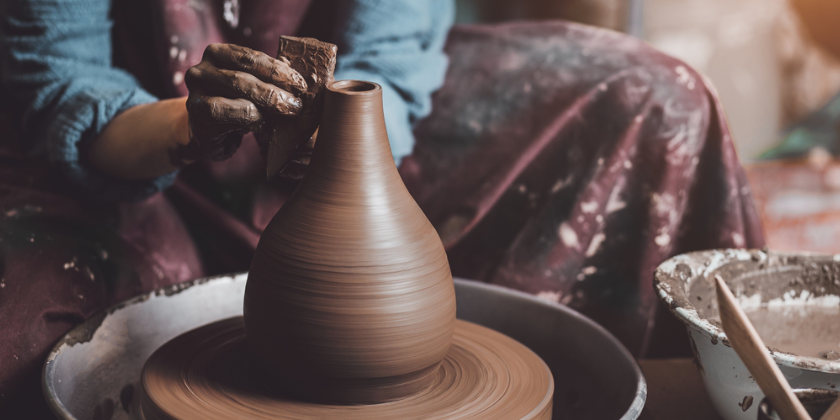

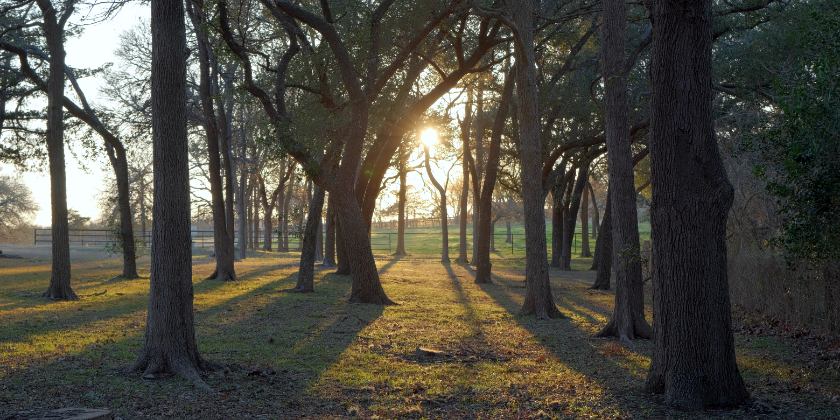
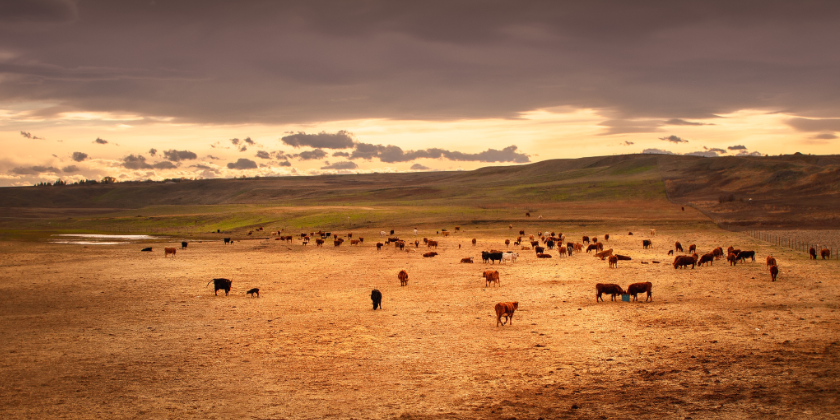
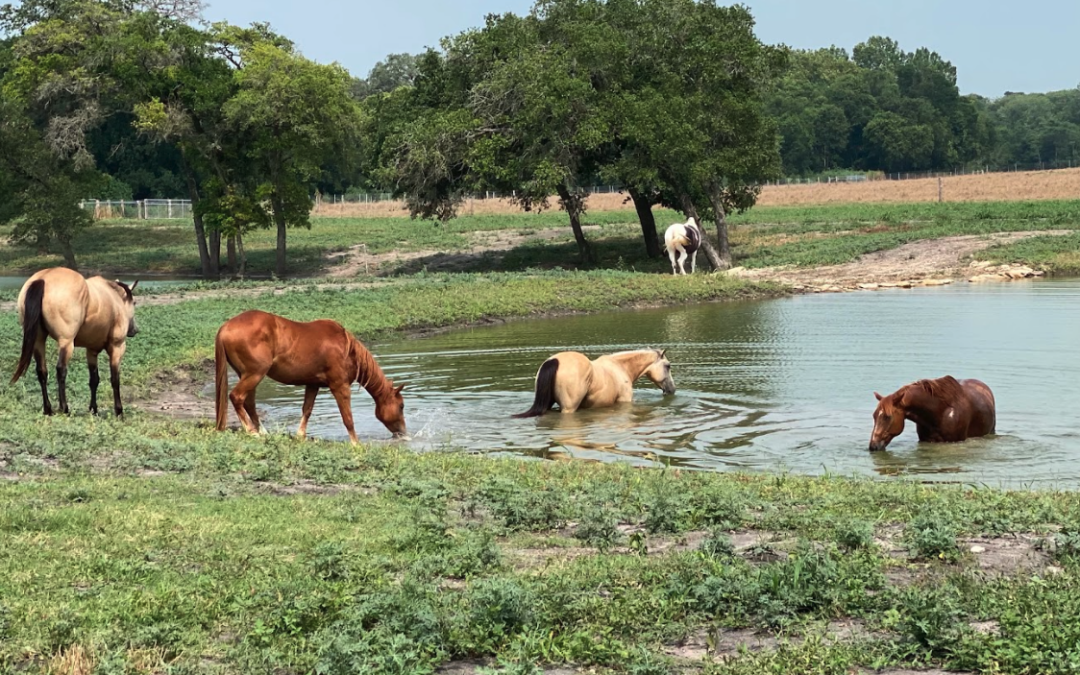
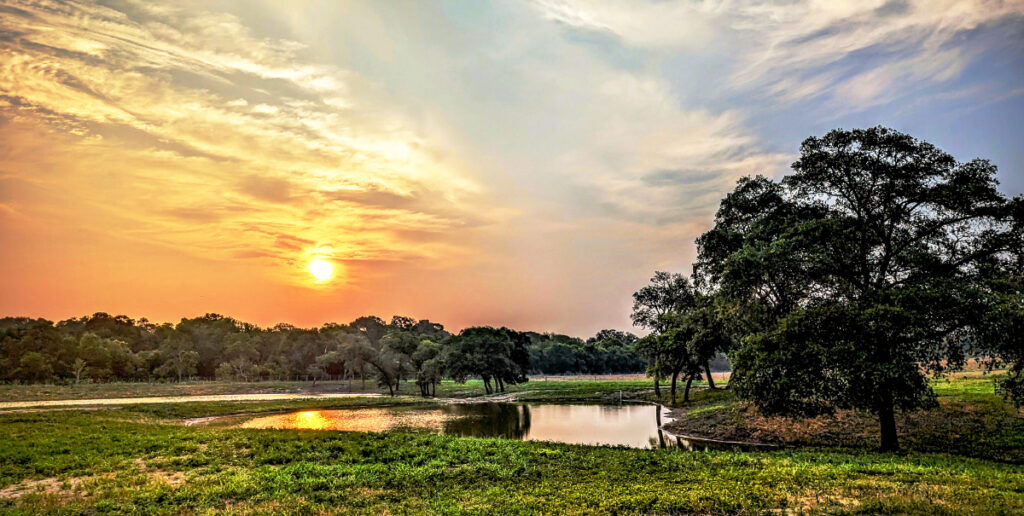
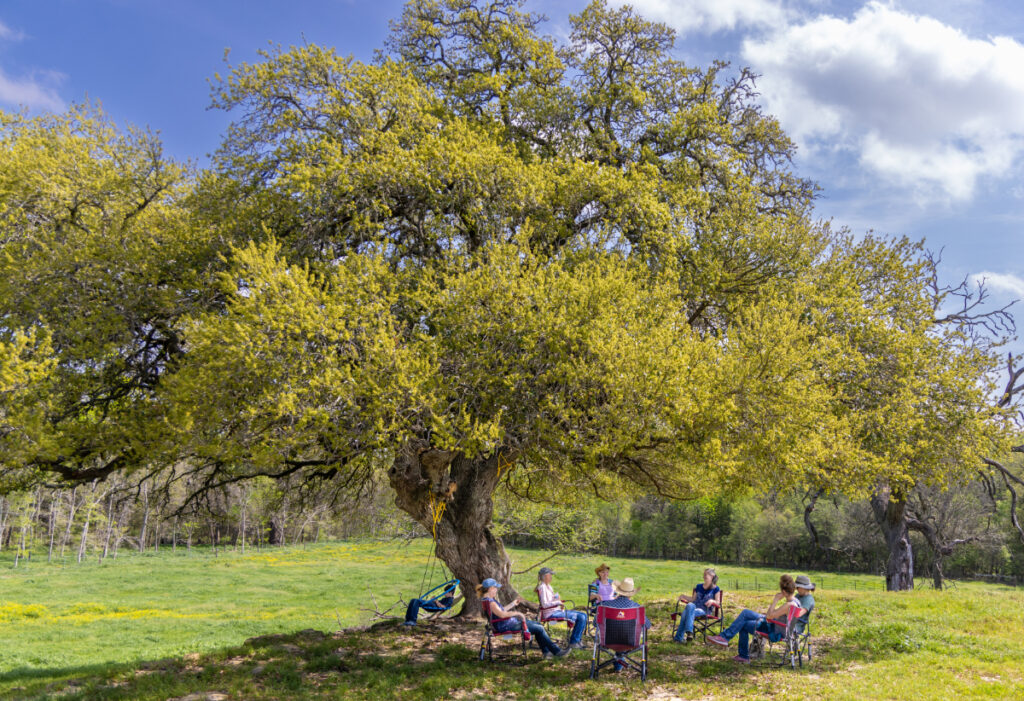

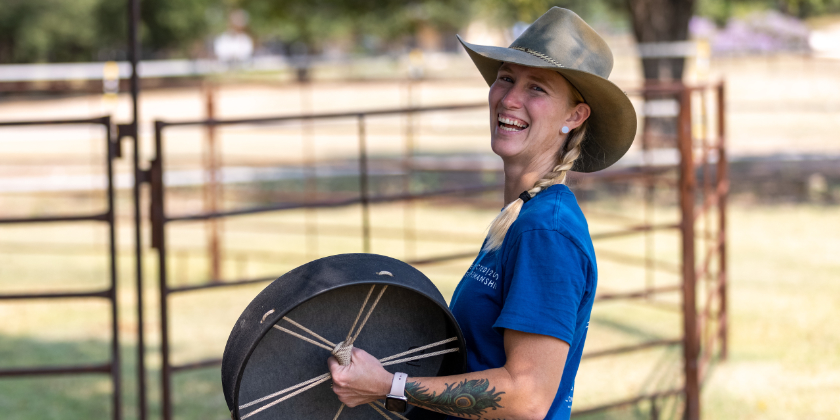
Recent Comments